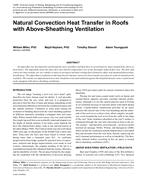The objectives of this research are as follows:
a) Propose a general methodology for evaluating and grading FDD methods and tools using steady state data which would include issues such as ability to correctly detect and diagnose faults, ease of use, amount of training data, robustness, sensitivity, practicality in terms of conversion to a tool which can be implemented;
b) Identify four different chiller FDD methods, and evaluate them against steady-state chiller performance data (both fault-free and faulty) gathered from a laboratory chiller as part of RP1043 (Comstock and Braun, 1999) with the intention of identifying the “best” one for subsequent field evaluation as part of the Phase III follow-up research. This evaluation should be based on the general methodology developed above;
c) Explicitly study the impact of sensor accuracy on FDD method- assess accuracy and placement of exiting sensors, and propose additional ones if appropriate;
d) Use the dynamic chiller model developed as part of RP1043 and simulate chiller performance under a number of different operating conditions, fault types and severity levels in order to evaluate (i) whether multiple simultaneous faults could be detected by any one of the FDD methods, and (ii) whether the chiller dynamics associated with its transient behavior under varying boundary conditions could be used to enhance the FDD capability of the steady-state methods.
Units: I-P
Product Details
- Published:
- 2009
- Number of Pages:
- 206
- File Size:
- 1 file , 2.4 MB
- Product Code(s):
- D-RP-1275


